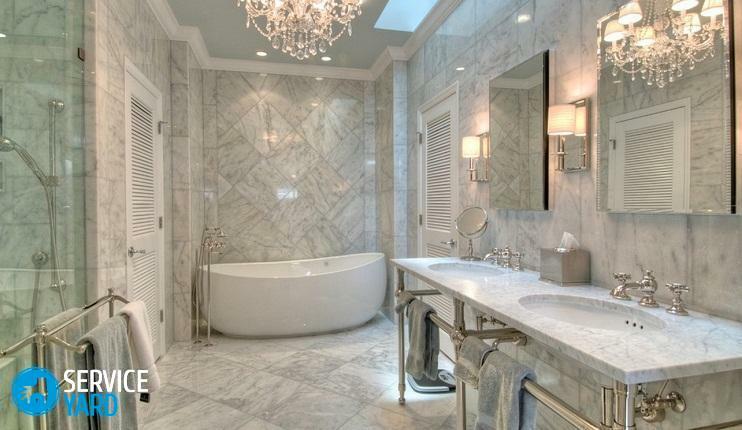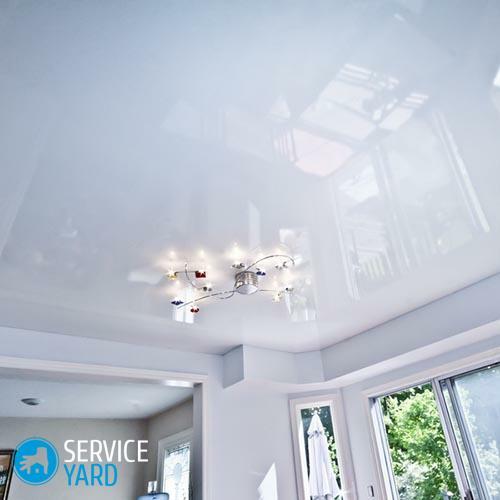Heat exchanger circulates inside and does not allow ingress of cold air
CONTENT
- 1 What is a heat exchanger, and why do we need
- 2 Advantages and disadvantages of air recovery systems for private houses and apartments
- 3 The operating principle of supply and exhaust units with heat recovery
- 4 Types of heat exchangers for forced ventilation
- 5 Leading manufacturers of heat exchangers
- 6 The best models of household energy recovery
- 7 Calculation of the heat exchanger power for ventilation
- 8 What to consider when choosing a particular model
- 9 How to make a heat exchanger air with his hands
- 10 Video: Installation and connection with their hands exchanger for private houses - the nuances of work
What is a heat exchanger, and why do we need
Heat exchanger - a technical device, which is an element of the ventilation system, equipped with a a heat exchanger by which a reduction of heat losses inside the premises where it used. Having the heat exchanger allows the desired ventilation in the room, which is achieved by the presence in the design of supply and exhaust Fan and heat exchanger enables heat removal from the air pumped from the room air and passing it flows, coming from the outside. The main features of this equipment are:
- Providing room ventilation year-round cycle of use.
- Reduced heat loss in winter.
- Cooling air coming from the outside in the summer.
device placement option in a private house
Advantages and disadvantages of air recovery systems for private houses and apartments
air recovery system gradually begin to "win" their consumers, and the reason for that is their dignity, which include such factors as:
- ensure the required level of ventilation in the room without disturbing the integrity of structures and their elements (windows, doors, etc.);
- protect inner space from external contaminants present in the air (dust, suspended impurities etc);
- reduction of heat losses through the ventilation system;
- It reduces the likelihood of mold and mildew on the construction elements;
- lengthy periods of operation;
- simple and inexpensive maintenance;
- for the installation does not require a variety of permits and approvals.
The scheme of ventilation systems with heat recovery of a country house
The disadvantages of the use of such systems include:
- the complexity of the installation work, especially in large facilities of ventilation systems;
- considerable dimensions, require a free space for the placement of the device and duct providing air circulation and discharge condensate;
- high price.
The operating principle of supply and exhaust units with heat recovery
System operation ventilation with heat recovery device is as follows:
- from the interior of houses, apartments or other capital facilities, equipped with a heating system, the intake air temperature is higher than on the street;
- at the same time cold air from outside is also sucked into the ventilation system of buildings;
- warm and cold air occurs in recuperator heat exchanger where heat transfer occurs from one air flow to another;
- Cool and clean air from outside is heated and only thereafter is fed into the interior of the building;
- used for air intake inlets, equipped with fans.
Schematic diagram for the heat exchanger
Types of heat exchangers for forced ventilation
Recuperators vary in design specifications and materials used in the manufacturing, which ultimately determines the scope of the use of a particular model and the way it installation. Installation of such systems may be formed inside the wall, outside or inside the apartment (country house).
plate heat exchangers
This kind of device is highly efficient and cost affordable. The basis of this type of heat exchangers is a plate heat exchanger made of copper, aluminum or galvanized steel. The plates are fixed rigidly, warm and cold air is not mixed, heat transfer process goes in both directions simultaneously.
Appearance and direction of air flow in the plate heat exchanger
Among the shortcomings of this type of device to be noted the formation of condensation on the plates heat exchanger for use in winter, which requires its removal device or system availability thawing.
rotary models
The basis for the design of such models is rotating around its axis coil, made of a rotor (s), equipped with a petals. It is an open system, the lack of which is the possibility of the penetration of odors from the environment into the interior of the premises. The advantages of rotary heat exchangers are such factors as:
- low likelihood of condensation on the surface of the heat exchanger;
- high efficiency;
- ease of maintenance and use.
NOTE!(Click to see)
Performance of rotor models is performed by changing the rotational speed of the heat exchanger.
Driving and appearance rotary recuperator
Models with an intermediate coolant
Constructions of this type recuperators include the presence of two heat exchangers, which circulates water or glycol solution. One of the heat exchangers located in the exhaust duct of the ventilation system, and the second - in the supply. Accordingly, warm air transmits its heat to the coolant in the heat exchanger of the exhaust channel, and on the heat exchanger in the coolant supply duct gives its air coming from the outside.
NOTE!(Click to see)
Temperature regime is regulated by changing the coolant flow rate.
The advantage of this type of device is the lack of contact between the air streams, excluding the possibility of contamination from one transmission to another. The disadvantages are: low efficiency and the need for a sufficiently frequent maintenance.
Driving device recuperator intermediate coolant
Other types of heat exchangers
In addition to the above discussed types of devices of this type, is the most common, there are a few more:
- roof - designed for outdoor installation, are used in ventilation systems for industrial use on the sites;
- chamber - the foundation design is working chamber, divided by a shutter means which changes the direction of movement of air streams;
- heatpipes - constitute a closed system of tubes filled with Freon heat exchanger and employees.
Scheme of the heat exchanger chamber
These types of devices have these distinctive features:
- for roof models - High efficiency and cost;
- for chamber models - high efficiency and the possibility of getting odors and particulate matter from one form to another air flow;
- for heat pipes - low efficiency and the inability to penetration of contaminants from one air flow to another.
The scheme of work patterns, working on the principle of heat pipes
Leading manufacturers of heat exchangers
Production technical equipment for ventilation for civil and industrial systems destination, involved Russian and foreign companies specializing in HVAC equipment and systems energy saving. In our country the most popular are models from companies such as:
- Electrolux, Systemair and Ostberg (Sweden);
- Remak (Czech Republic);
- Royal Clima (China);
- Mitsubishi Electric (Japan);
- Vaillant and Blauberg (Germany);
- Ventmachine (Russia).
Heat exchanger for an apartment in the context of
The best models of household energy recovery
The following table shows the best models of heat exchangers of the above the most popular manufacturers of such equipment. The cost of devices is shown, as of 2019.
| Model | Specifications |
«Electrolux EPVS-200" |
|
| Model | Specifications |
«Mitsubishi Electric VL-100EU5-E» |
|
| Model | Specifications |
«Royal Clima RCS 350" |
|
| Model | Specifications |
«Blauberg VENTO Expert A50-1 Pro» |
|
| Model | Specifications |
«Vent Machine PVU-350 EC Zentec» |
|
Calculation of the heat exchanger power for ventilation
Power recuperator is determined by its ability to pass through its structure a certain amount of air per unit time, i.e., this performance. Knowing the volume of space, ventilation which should be carried out through a heat exchanger, it is possible to determine the necessary performance - for which these values must be added. The efficiency of such equipment depends on the temperature of air flow, incoming and outgoing in the room where the heat exchanger is installed. This can be determined by the following formula:
K = (T3 - T1) / (T2 - T1)Where:
T1 - the outside temperature;
T2 - air temperature in a ventilated environment;
T3 - air temperature at the entrance to the room in the supply duct.
Placing the heat exchanger on the wall of a country house (apartment)
What to consider when choosing a particular model
When choosing a heat exchanger core indicators influencing this choice are:
- Efficiency of the device - determines the degree of heat recovery, i.e., her savings.
- The degree of cleaning air flowing from the outside into the interior of the premises.
- Electric power.
- Performance characteristics (duration of the operation and overhaul cycles, maintainability, etc.).
- Cost.
In addition, for models intended for use in the apartment, important indicators are: dimensions and noise, and for use in a country house - the weight, type and placement degree of protection.
Driving a country house ventilation with heat recovery, is placed in the attic of the building
How to make a heat exchanger air with his hands
Recuperators factory production are quite expensive, so being able to work with manual plumbing and electrical tools, such a device can be made independently. In this case, the main key to success is the availability of free time and the desire to achieve the goal. All work can be divided into several stages: preparation and production, installation and verification of operation.
Preparatory stage
During this period of work necessary to determine the device type and the presence of the necessary materials and tools. Once the type of heat exchanger is defined, you must create a sketch (drawing) with principal dimensions that will prevent overspending materials.
Homemade air recuperator manufactured using polycarbonate
Thus, the need for the production of plate structure:
- sheets 0.5-1.5 mm thick (aluminum, copper, galvanized etc.) - for the manufacture of heat exchanger plates;
- other material (wood, plastic, etc.) - for creating a gap between the plates of the heat exchanger;
- material for manufacturing the casing (metal, plywood boards, plastic);
- adhesive and sealant;
- insulation;
- connecting flanges diameter corresponding pipes of the ventilation system;
- fans;
- metal profile (cabin, profiled tube, etc) - to manufacture design which provides fastening to the wall or ceiling;
- fastening elements (screws, screws, etc.);
- electric jigsaw and "Bulgarian";
- electric screwdriver or drill;
- bench tools (screwdriver, wrench, hammer, etc.).
Production of the plate type heat exchanger
Draw a sketch, and to prepare the necessary tools and materials, you can start making that follows.
| Illustration | Description of the action |
| Using the material for manufacturing the heat exchanger plates, cut into blanks required size and in the desired amount. | |
| A material prepared to create a gap, the desired cut size and bonded to the surface of the plates. | |
| The plates are collected in a block, with the gaps on their surface are placed in a checkerboard pattern. | |
| The plates in the assembled unit thoroughly bonded, compounds places sealed except for clearances intended for air ventilation flows. | |
| From the material for construction of the hull going box, into which the assembled unit, and the fan 4 mounted in the end walls. | |
| The inner surface of the housing is covered with a heat insulator, and it is not covered by the working plane of the heat exchanger. |
Once all construction elements are placed in the housing, the outer cover is installed.
Mounting of the assembled device
When the heat exchanger is made, it must be installed in a placement. For its attachment uses a metal structure is made of metal profiles and mounted to the wall of a building or floor slabs. design size depends on the geometric dimensions of the assembled device. For connection to the air ducts of the ventilation system used by connecting flanges mounted on the unit, and special clamps.
operability test
After the device is installed, it must be connected to the electrical network corresponding to the voltage class of fans used.
IMPORTANT!(Click to see)
The ducts are made of metal, to be grounded, and the fan power line - have a third ground wire.
Using corrugated sheet for the manufacture of heat exchanger
System comes into operation, and with the help of the thermometer is tested its effectiveness. For this purpose, temperature measurements are made at three points in space, and the calculation is performed according to the formula given in this article (see. "Power Calculation" section).
Video: Installation and connection with their hands exchanger for private houses - the nuances of work
An air heat exchanger device for self-production, as well as how to install the plate heat exchanger, and what you should pay attention, tell the resulted video clip below.



